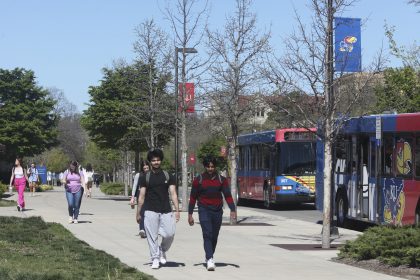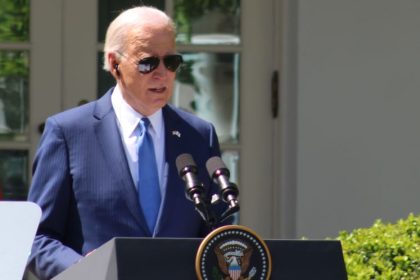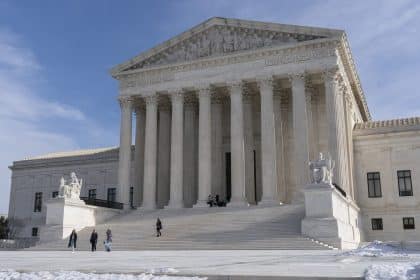Some States Move Toward Financial Aid Based on Need Rather Than Merit

State-funded merit scholarships are politically popular. But as college tuition rises, policymakers in some states are starting to rethink financial aid that disproportionately benefits white, wealthy students and often duplicates scholarships awarded by public universities.
Lawmakers in Georgia added a need-based grant last year, as did Utah lawmakers this year. Mississippi and Louisiana are locked in long-running debates over how to best spend aid money as costs rise.
And Utah may be poised to take a radical step: Last month, the Utah State Board of Regents recommended lawmakers eliminate two merit scholarships — which comprise 90% of annual state financial aid spending — and instead spend 70% of the state’s $20 million annual financial aid budget on grants for students struggling to pay for college.
“I think the Regents were asking themselves: What’s the best use of finite state funds, and how can we ensure that all Utah students know that college is accessible and available to them?” said Melanie Heath, assistant commissioner for communications and outreach at the Utah System of Higher Education.
While states are spending less per student on higher education than they were about 20 years ago, they’re spending more on financial aid, according to the State Higher Education Executive Officers Association, a membership group based in Boulder, Colo. State financial aid spending has more than doubled since 2000 to $10.6 billion.
Most state aid dollars are spent on grants for low-income and middle-class students. But 10 states and Washington, D.C., spend more than two-thirds of their financial aid budgets on grants that reward students for their high school grades and test scores, regardless of family income.
Merit aid supporters have historically argued that since the federal Pell Grant helps low-income students pay for college, states should spend their financial aid money on a complementary program to reward and retain high-achievers, said Sarah Pingel, a senior policy analyst at Education Commission of the States, an education policy research organization based in Denver.
Some states are starting to question that approach, Pingel said. “College affordability issues are touching so many more students now than they used to.”
To be sure, at least one state is moving in the opposite direction and newly embracing merit aid. Illinois lawmakers created the state’s first state-funded merit scholarship last year, and this year increased its funding by $10 million to $35 million in addition to increasing need-based aid funding by $50 million.
Democratic Gov. J.B. Pritzker called for more money for both types of grants in his February budget speech, saying he wants to fund merit aid “so we can keep our best and brightest in Illinois.”
Most Utah lawmakers don’t want to eliminate merit aid, said state Rep. Derrin Owens, a Republican and former school counselor who sponsored the bill creating Utah’s need-based Access Utah Promise scholarship. Students nationwide are rewarded for performing well academically, he said. “I wouldn’t want to take that away from our students, and this is whether they’re Pell-eligible or not.”
But Owens said the largest state-funded merit scholarship, the Regents’ Scholarship, needs updating. His financial aid bill also limited Regents’ awards to ensure the state doesn’t award more money than total tuition and fees and stopped students from using Regents’ money to attend private colleges.
He said the Regents’ Scholarship was created in 2008 to encourage more students to take college-preparatory courses, but since then such coursework has become standard in Utah high schools. “It fulfilled its mission,” he said of the grant. “And our demographics have changed and it’s time to help another group.”
About half of states, including California, Texas and New York, spend little to no money on merit aid. In the Southeast and some Western states, however, almost all state higher education aid money is spent on grants that reward high school achievement.
In some states with large merit aid programs, such as Florida and Mississippi, a $6,195 maximum Pell Grant is still enough to cover all or most of a year’s in-state tuition at public universities.
But advocates for low-income and minority students have challenged state merit aid programs, pointing to data that shows such scholarships disproportionately help wealthy, white students.
Take Louisiana’s Taylor Opportunity Program for Students, or TOPS, which can guarantee recipients close to a full ride at whichever state college or university they attend — or a $5,718 grant to put toward in-state private university tuition.
About three-quarters of TOPS recipients since 2007 have been white and more than two-thirds have come from families with above-average incomes, a 2019 state report found. Over 18% of recipients came from families that earned $150,000 a year or more.
Although there’s no statutory requirement to fully fund TOPS, there’s tremendous political pressure to do so, said Davante Lewis, public affairs and outreach coordinator for the Louisiana Budget Project, a left-leaning think tank based in Baton Rouge.
“It’s an entitlement program, typically for richer, whiter families,” he said. Lewis noted that lawmakers spent almost 11 times as much money on TOPS last year as they spent on need-based grants.
The state report did have some good news for TOPS supporters. The grant could be encouraging more high schoolers to complete a college-preparatory curriculum: In 2018 about 87% of Louisiana high school graduates had completed courses required for a TOPS award.
That said, starting with 2014’s incoming freshmen, all Louisiana high school students must complete a TOPS-eligible curriculum to graduate, according to the state education department.
The report also found that almost all TOPS awardees do accept the grant and attend Louisiana universities.
Data on Mississippi’s three major state-funded financial aid programs tells a similar story. Mississippi offers a merit scholarship, a need-based grant with a merit component, and a scholarship that’s need-exclusive — meaning students whose families cannot afford to put any money toward college tuition cannot qualify.
The need-exclusive grant was created in the 1990s, said Jennifer Rogers, director of student financial aid for the state higher education system. “The thinking among the Mississippi legislature at the time was, well, lower-income students have access to the Pell Grant, and we’re going to provide this as an incentive for more of the middle-income families to make college affordable,” she said.
Almost three-quarters of Mississippians awarded state financial aid in 2017-18 were white, according to the Mississippi Office of Student Financial Aid’s latest annual report, even though whites make up less than 60% of the state’s total population. Almost half came from families with incomes over $75,000.
It’s not clear if scholarships aimed at high achievers help keep those students in Mississippi, Rogers said. “We have some studies that show it’s not necessarily fulfilling that purpose,” she said, although the state’s college presidents argue otherwise.
“Our university believes that scholarships are indeed beneficial in recruiting and retaining students,” said Sidney Salter, chief communications officer and director of public affairs at Mississippi State University, in an email.
While lawmakers can make a strong case for prioritizing equity in financial aid spending, there’s also a strong counterargument for rewarding academic quality, said Richard Vedder, an emeritus professor of economics at Ohio University. It depends on whether state lawmakers view colleges as places that should be open to everyone, regardless of their academic background.
“It’s one of those issues where I don’t know if it’s possible to decide what’s right or wrong,” he said.
In Utah, the debate over merit aid has had an equity component but also has been influenced by two other factors: the way state scholarships are currently structured, and the way Utah’s public universities are spending their institutional aid dollars.
Utah this year spent about $18 million on merit scholarships — mostly the Regents’ Scholarship, which is awarded to about 4,000 students annually — and $2 million on a need-based program created last year, said Heath of the Utah System of Higher Education.
Over the past three years, about 91% of Regents’ Scholarship recipients have been white, Heath said. Almost 75% of Utah public school students in 2019 were white, according to the Utah State Board of Education’s most recent figures.
And the state’s two merit scholarships have, until this year, been awarded as a flat dollar amount regardless of other aid students receive. Almost all Regents’ Scholars also get institutional financial aid, Heath said. “It was really kind of cash on top of other scholarships that students had already gotten,” she said of the state grant.
Utah’s top universities already spend a large proportion of money on merit scholarships. The University of Utah spent about 5% of its $43 million financial aid budget last year on need-based aid, according to data it reported as part of the Common Data Set Initiative, a collaboration between higher education data providers and publishers. At Utah State University, the share was 8% of $16.5 million.
The gap in institutional aid funding convinced Sheva Mozafari, a University of Utah senior who serves on the Board of Regents, that the state should spend its money differently. “To me, I think the state should play a role more of accessibility — let’s provide access to higher ed,” she said
Mozafari said all the Utah college and university student body presidents she’s talked to back the Board of Regents’ recommendation to spend most of its financial aid money on the Access Utah Promise grant and the remaining $6 million on a simplified merit aid program that colleges would administer. She said some students have told her they feel they have benefited from scholarships they don’t really need.
The University of Utah also supports the recommendation, said Brenda Burke, executive director of the University of Utah Office of Scholarships and Financial Aid, in an emailed statement to Stateline. She noted that the proposed change would make it easier for the university to package state funds with university aid.
“We are excited about the creative possibilities this change offers for us to support access, affordability, and completion,” she wrote.
Burke said the need-based financial aid spending the university reported included only money awarded to students who filled out a federal financial aid form that determined they had need. Only 58% of University of Utah students fill out the form, she said, so the survey data doesn’t necessarily capture all students with financial need who receive institutional aid.
Whether Utah lawmakers will be willing to approve the change — and potentially anger voters who love the Regents’ Scholarship — remains to be seen.
Rep. Owens said that he hasn’t spoken to the Board of Regents yet and isn’t planning to run any legislation on their behalf this year. An early version of his financial aid bill this year proposed eliminating the Regents’ Scholarship, but that language didn’t make it into law.
Many readers who commented on a Salt Lake Tribune story about the Board of Regents proposal were upset about the change. “Poor kids get more opportunities via Pell grants and subsidized loans. Any poor kid that wants to go to college can easily cover their tuition costs,” one reader wrote. “The middle class is the forgotten group in all of this. Where is their relief?”
The Utah Parent-Teacher Association hasn’t taken a position on the recommended change yet, said Amy Choate-Nielsen, communications director. “We are concerned it could have a negative impact on middle-class students who are not eligible for other types of support that are available for lower-income students,” she said.
Jenna Mollinet, a high school sophomore whose mom is president-elect of the Utah PTA, said her school counselor recently told her that the Regents’ Scholarship could be eliminated.
“It was super disappointing,” she said, as she’s been trying to get grades and take classes that would make her eligible for the grant. Her friends who were likewise positioning themselves for the scholarship are also disappointed, she said.
In Mississippi, the growing cost of financial aid payments — particularly the state’s need-based program, which awarded about $24 million across almost 4,000 students last year — has lawmakers’ attention, Rogers said.
“There has been some conversation about, are the merit aid programs serving the purpose they were designed to serve?” she said.
But in neighboring Louisiana, public support for merit aid is so strong that lawmakers have continued to fund TOPS despite its ballooning cost.
Democratic Gov. John Bel Edwards has made fully funding the program a priority. “I don’t favor changing TOPS; I favor funding TOPS,” he told reporters in January. He was recently reelected.
———
©2019 Stateline.org
Visit Stateline.org at www.stateline.org
Distributed by Tribune Content Agency, LLC.























